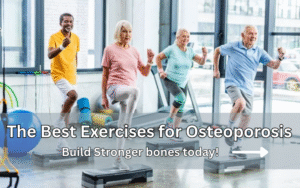Achilles rupture recovery might sound scary without surgery, but it’s more common than you think. Many people heal well with the right rehab plan, even without going under the knife. In this post, you’ll learn what to expect during recovery, how long it takes to heal, and the top exercises that help you get stronger. Whether you just got hurt or you’re already in a boot, this guide will walk you through each step of the journey.
Table of Contents
🚨 Looking for a step-by-step approach to Achilles tendon rupture recovery? Check out Non-Operative Achilles Rupture Rehabilitation Guideline from Sanford Health.
🏁What Is an Achilles Tendon Rupture?
The Achilles tendon is the thick, strong band of tissue that connects your calf muscles to your heel bone. It helps you walk, run, jump, and stand on your toes.
An Achilles tendon rupture happens when this tendon tears or snaps, either partially or completely. It’s a serious injury that makes it hard to walk or push off your foot.
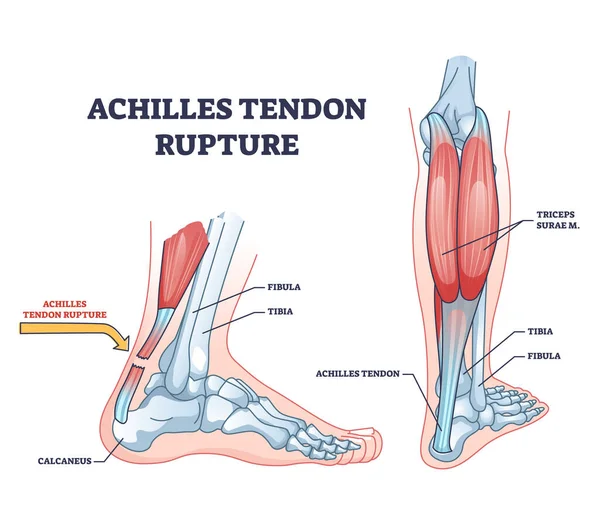
What Causes It?
Most Achilles ruptures happen during activities that involve:
- Sudden stops or quick direction changes (like in basketball or tennis)
- Jumping or sprinting
- Tripping or missing a step
💡This injury is most common in adults aged 30 to 50, especially those who stay active on weekends but don’t train regularly. These are often called “weekend warriors.”
Signs You Might Have Ruptured Your Achilles
If you rupture your Achilles tendon, you might:
- Hear a loud pop or snapping sound
- Feel a sharp pain in the back of your ankle or calf
- Have trouble walking or standing on your toes
- Notice swelling or bruising near your heel
- Feel like your foot isn’t working right
💡You may even feel like someone kicked or hit you in the back of the leg—when no one did.
How Is It Diagnosed?
A doctor or physical therapist will usually check:
- How your ankle moves
- If there’s a gap in the tendon
- Your ability to point your foot (plantarflexion)
💡They may also order an ultrasound or MRI to confirm the tear and see how bad it is.
❓Can You Recover from an Achilles Tendon Rupture Without Surgery?
Yes — you can recover from an Achilles tendon rupture without surgery in many cases. In fact, non-surgical treatment is becoming more common, especially when the injury is diagnosed early and treated correctly.
This approach focuses on letting the tendon heal naturally, often with the help of a walking boot, physical therapy, and a structured rehab plan.
Who Is a Good Candidate for Non-Surgical Treatment?
Non-surgical recovery may be right for you if:
- The rupture is partial, not complete
- You are less active or not a competitive athlete
- The tear is diagnosed early (within 1–2 weeks)
- You can follow a rehab plan carefully with your doctor or PT
💡People over age 40 or those with other health conditions often choose this route to avoid surgery risks.
Pros and Cons of Avoiding Surgery
Here’s a quick look at the benefits and possible drawbacks:
| Pros | Cons |
|---|---|
| No surgical risks (infection, scar) | Slightly higher risk of re-tear |
| Lower cost and faster initial care | Longer boot or brace use |
| No stitches or wound care needed | May take more time to rebuild strength |
| Less invasive | Not ideal for athletes or full tears |
✅ Most people who recover non-surgically can return to walking, working, and exercising — with patience and proper rehab.
✅Non-Surgical Achilles Recovery Timeline (Week-by-Week)
Recovering from an Achilles tendon rupture without surgery takes time — usually between 4 to 6 months or more, depending on your age, activity level, and how closely you follow your rehab plan.
Below is a simple week-by-week guide to what most people can expect. Keep in mind, everyone heals differently, so always follow your doctor or physical therapist’s advice.
🔹 Weeks 0–2: Protection and Rest
- What to expect:
- Your foot is placed in a cast or walking boot, often pointed downward (called “plantarflexion“)
- You may be told to stay off your foot (non-weight bearing)
- Goals:
- Let the tendon start healing
- Reduce swelling and pain
✅ Tips: Use crutches or a scooter. Keep your foot elevated as much as possible.
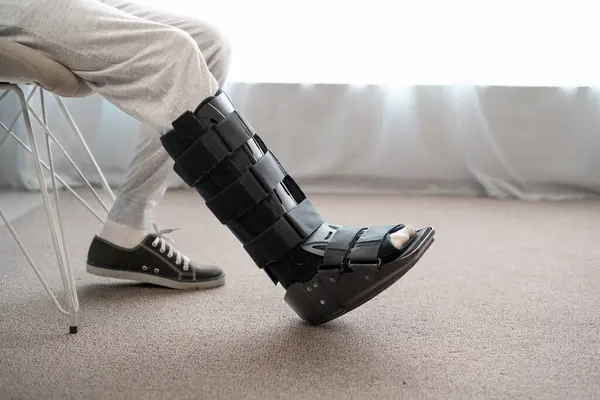
🔹 Weeks 3–6: Early Movement and Light Weight Bearing
- What to expect:
- Your boot may be adjusted to a more neutral angle
- You’ll begin placing some weight on your foot, as guided by your PT
- Gentle ankle range of motion may begin
- Goals:
- Slowly increase mobility
- Begin reactivating nearby muscles
💡 Movement should be pain-free and carefully monitored.

🔹 Weeks 7–12: Strength, Balance, and Control
- What to expect:
- You’ll likely stop using the boot around this time
- Physical therapy focuses on strengthening and balance exercises
- Goals:
- Rebuild calf and ankle strength
- Improve walking form
- Begin gentle single-leg balance drills
🏋️ This is when resistance bands, heel raises, and light cardio (like stationary biking) are introduced.
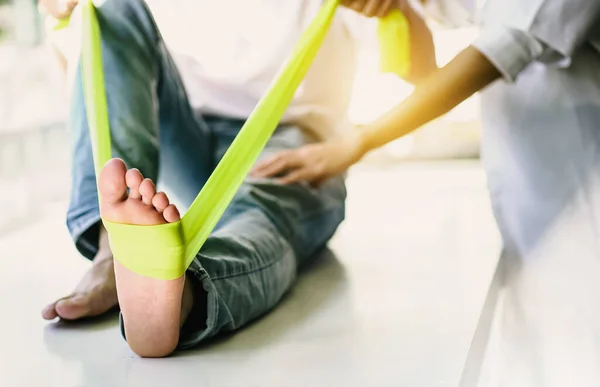
🔹 Months 3–6+: Return to Full Function
- What to expect:
- You’ll work on more advanced exercises (like step-ups, toe walking, and light jogging)
- PT may include sport-specific or work-specific movements
- Goals:
- Regain full ankle strength
- Return to normal walking, running, or sport (if cleared)
🕒 Full recovery may take 6–12 months for active individuals.
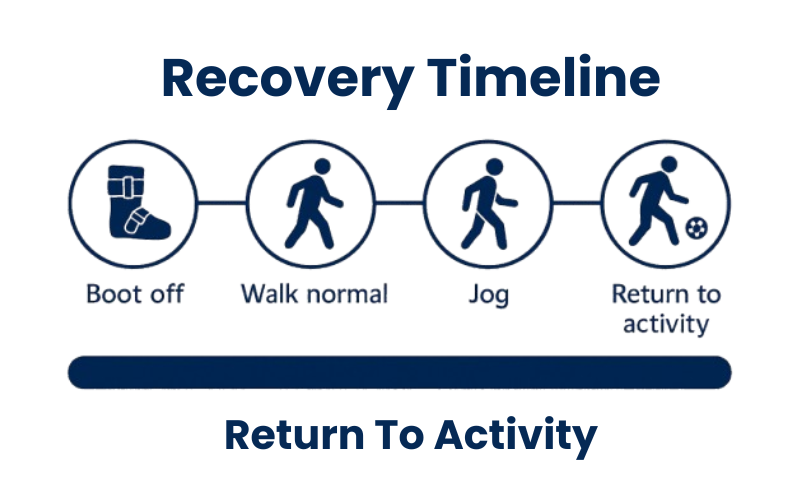
🚨 Quick Reminder:
Everyone heals at a different pace. If your foot becomes more swollen, painful, or weak during recovery, contact your doctor or therapist.
🏋️Top Physical Therapy Exercises for Non-Surgical Achilles Rehab
As your Achilles tendon heals, physical therapy exercises are key to building strength, flexibility, and balance. These movements help your body return to normal activities—safely and step by step.
Start slow. Always check with your physical therapist before doing new exercises. The goal is controlled progress, not rushing.
🔹 1. Towel Scrunches (Weeks 3–6+)
How to do it:
- Sit with your foot flat on the floor
- Place a towel under your toes
- Scrunch the towel toward you using only your toes
Why it helps:
This strengthens the small foot muscles and promotes circulation.
🔹 2. Seated Heel Raises (Weeks 7–12+)
How to do it:
- Sit in a chair with both feet flat
- Slowly lift your heels, keeping toes on the ground
- Lower back down and repeat
Why it helps:
Builds early calf strength without too much load on the tendon.
🔹 3. Resistance Band Plantarflexion (Weeks 8–12+)
How to do it:
- Sit with your leg extended
- Loop a resistance band around the ball of your foot
- Push down (like pressing a gas pedal), then return slowly
Why it helps:
Targets the Achilles and calf in a controlled way.
🔹 4. Balance Training on One Foot (Weeks 10–16+)
How to do it:
- Stand near a wall or counter
- Lift one foot and balance on the recovering leg for 10–20 seconds
- Try with eyes open, then eyes closed (as you progress)
Why it helps:
Improves ankle stability and helps retrain your nervous system.
🔹 5. Step-Ups or Heel Raises (Advanced Phase: 12+ Weeks)
How to do it:
- Use a low step or stair
- Step up slowly with the injured side, then step down
- For heel raises: stand and lift both heels, then progress to single-leg
Why it helps:
These mimic real-life movements like walking and climbing stairs.
🛠️Helpful Rehab Tools for Home Recovery
While physical therapy and exercise are the core of your Achilles rupture recovery, there are a few rehab tools that can make your recovery easier and more effective. These tools help you manage pain, improve mobility, and build strength — all from the comfort of your own home.
Here are some of the most popular and helpful rehab tools for Achilles recovery:
🔹 1. Walking Boot

A walking boot (also known as a CAM boot) is often prescribed in the early stages of recovery. It protects your Achilles tendon while allowing for limited weight-bearing. Some boots can even be adjusted to change the angle of your foot, helping to gradually move your foot into a more neutral position.
Why it helps:
- Provides support and protection
- Encourages proper healing by controlling foot movement
🔹 2. Resistance Bands
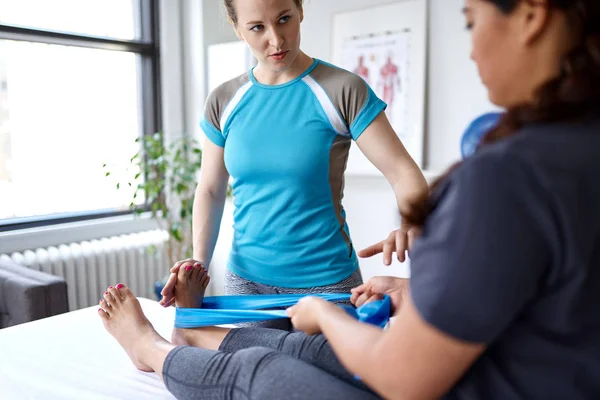
Resistance bands are essential for building strength and flexibility in your calf and ankle. They’re a great tool for performing controlled exercises, such as plantarflexion (pressing your foot down), dorsiflexion (pulling your foot up), and ankle rotations.
Why it helps:
- Increases strength in the Achilles and surrounding muscles
- Offers low-impact resistance for controlled movement
🔹 3. Heel Lifts
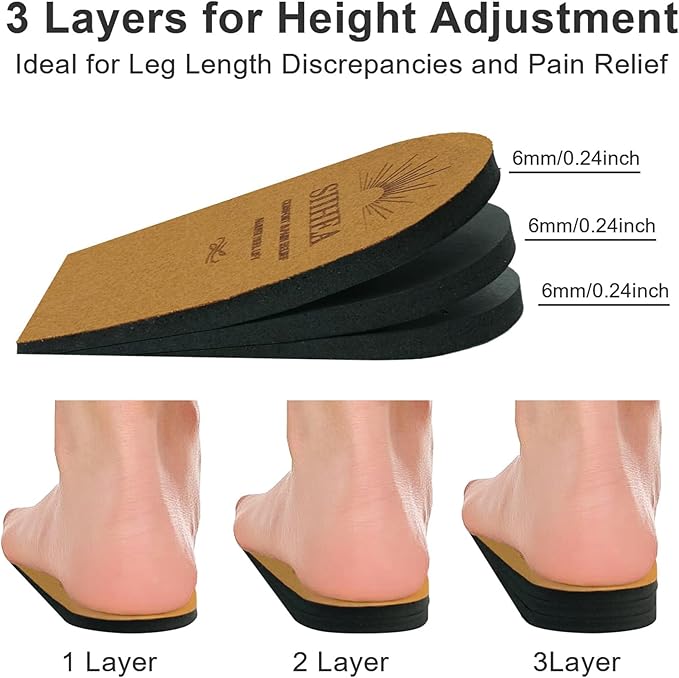
Heel lifts are small pads placed inside your shoes to raise your heel slightly. They are commonly used during the early stages of recovery to reduce strain on the Achilles tendon by limiting the stretch of the tendon when you walk.
Why it helps:
- Reduces strain on the tendon during walking and standing
- Encourages a more natural gait while you heal
🔹 4. Cold Therapy Packs or Ice Wraps
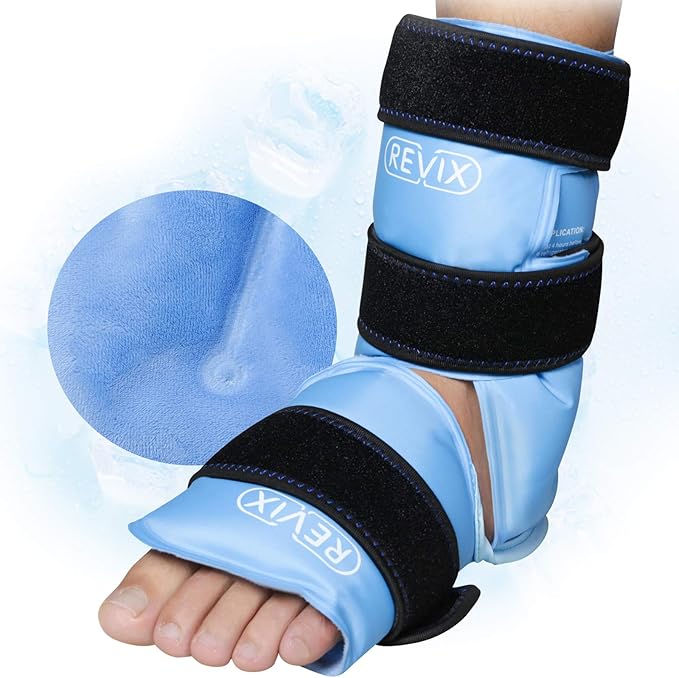
Cold therapy helps reduce inflammation and swelling, especially in the first few weeks after injury. Cold packs or ice wraps can be easily applied to the Achilles tendon after therapy sessions or exercise to calm down any swelling or discomfort.
Why it helps:
- Reduces swelling and pain in the early healing stage
- Helps with recovery after exercises or activity
🔹 5. Foam Roller
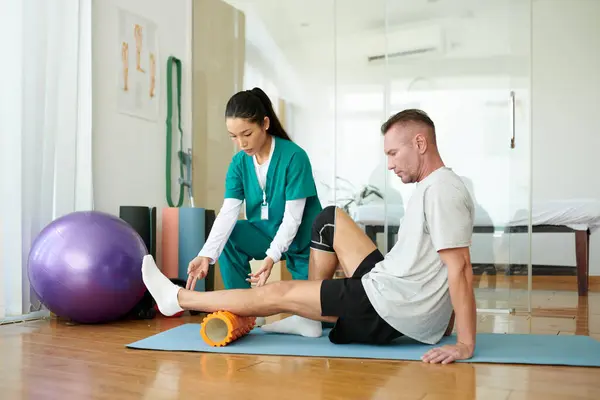
A foam roller is a useful tool for massaging and stretching the calf muscles. Using a foam roller after your exercises can help release tightness in the muscles and improve blood circulation.
Why it helps:
- Releases muscle tension and tightness
- Increases circulation to aid the healing process
🔹 6. Ankle Brace
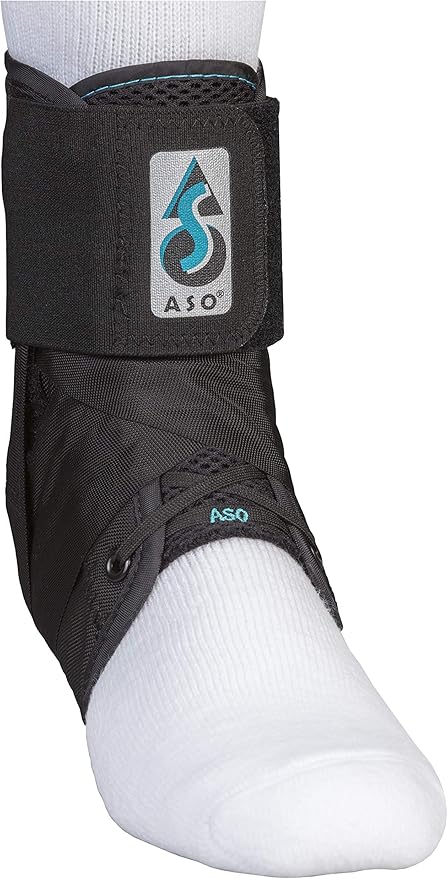
Once you’ve progressed beyond the walking boot, an ankle brace provides additional support as you transition to more weight-bearing activities. It helps stabilize the ankle during everyday movements and protects the Achilles from reinjury.
Why it helps:
- Stabilizes the ankle during walking or exercise
- Offers extra support while transitioning to more advanced movements
💡Tips for a Safe and Successful Recovery
Recovering from an Achilles tendon rupture takes patience and dedication, but with the right mindset and approach, you can heal fully and safely. Here are some important tips to ensure your recovery goes as smoothly as possible:
🔹 1. Follow Your Doctor’s Instructions
The most important step is to listen to your healthcare provider. Your recovery plan should be customized based on your injury’s severity, your overall health, and your activity level. Always follow their advice on when to start weight-bearing exercises, how to adjust your boot, and when to transition to more advanced movements.
Why it helps:
- Personalized recovery plan helps prevent reinjury
- Reduces the risk of complications or setbacks
🔹 2. Don’t Rush Your Recovery
It’s natural to want to get back to your regular activities, but speeding through recovery can lead to setbacks. Your tendon needs time to heal and regain strength. Progress slowly through each phase of your recovery, and resist the urge to push too hard, too soon.
Why it helps:
- Prevents reinjury or further damage to the tendon
- Reduces stress on the healing tissue
🔹 3. Stay Consistent with Physical Therapy
Your physical therapist will guide you through the best exercises for strengthening your Achilles tendon and improving your range of motion. Consistency is key! Make sure you perform your exercises as directed, and be patient with your progress.
Why it helps:
- Helps you regain strength and mobility
- Ensures a full and safe return to activity
🔹 4. Manage Pain and Swelling Properly
It’s common to experience some pain and swelling during recovery, but it should always be manageable. Use ice, compression, and elevation to control swelling, and never push through sharp pain. Your pain should gradually decrease as your tendon heals.
Why it helps:
- Keeps swelling and discomfort under control
- Supports healing and prevents complications
🔹 5. Eat a Balanced Diet for Healing
Your body needs the right nutrients to heal effectively. Eating a balanced diet with plenty of protein, vitamins (especially Vitamin C and D), and minerals (like calcium and magnesium) helps promote tissue repair and muscle recovery.
Why it helps:
- Supports tendon healing and muscle repair
- Helps you stay energized throughout the recovery process
🔹 6. Stay Positive and Be Patient
Recovery can sometimes feel like a slow process, but keeping a positive attitude is crucial. Celebrate small wins—like taking a few steps without pain or increasing your range of motion. This will help you stay motivated and on track.
Why it helps:
- A positive mindset supports emotional well-being
- Helps keep you focused on the long-term goal of full recovery
💡 Quick Tip: Create a Recovery Journal
Tracking your progress, noting pain levels, and recording exercises you complete can help keep you on track and motivated. Plus, you’ll have a clearer idea of your progress and areas that need more attention.
🏆When to Call Your Doctor or PT
- Signs something isn’t healing right
- Pain that gets worse instead of better
- Swelling that won’t go down
⚠️How to Prevent Achilles Tendon Ruptures in the Future
Once you’ve recovered from your Achilles tendon rupture, it’s important to take steps to prevent future injuries. Achilles tendon injuries are often preventable with proper care and attention. Here are some tips to keep your tendon healthy and strong, reducing the risk of re-injury.
🔹 1. Warm Up Before Exercise
Always start any workout or physical activity with a proper warm-up. This helps increase blood flow to your muscles, improving flexibility and reducing the chances of injury.
Why it helps:
- Prepares your tendon for the stress of exercise
- Reduces stiffness and tightness
💡 Tip: Focus on dynamic stretches (like leg swings and ankle circles) instead of static stretching before activity.
🔹 2. Strengthen Your Calves and Ankles
Weak calf muscles are a major risk factor for Achilles tendon injuries. Continue strengthening your calf muscles, ankles, and lower legs to provide better support for your Achilles.
Why it helps:
- Stronger calves take pressure off the Achilles tendon
- Helps improve balance and prevent overuse injuries
💡 Tip: Incorporate calf raises and resistance band exercises into your routine to keep your muscles strong and flexible.
🔹 3. Increase Intensity Gradually
Avoid jumping into high-intensity exercise too quickly, especially after recovering from an injury. Gradually increase your activity level and intensity to allow your Achilles tendon time to adapt and strengthen.
Why it helps:
- Reduces stress on the tendon
- Helps avoid overuse injuries
💡 Tip: Follow the 10% rule: Increase your weekly workout intensity by no more than 10% to avoid overloading your tendon.
🔹 4. Wear Proper Footwear
Supportive shoes that provide good arch support and cushioning are essential, especially when doing high-impact activities like running or jumping. Avoid wearing worn-out shoes, as they lose their ability to absorb shock and support the foot properly.
Why it helps:
- Helps cushion the impact on your Achilles tendon
- Reduces strain and discomfort while walking or exercising
💡 Tip: Choose shoes that are designed for your specific activity. Running shoes are different from basketball shoes, so pick the right one for your needs.
🔹 5. Stretch Regularly
Regular stretching, especially for your calves and hamstrings, helps improve flexibility and reduces tension in the Achilles tendon. Tight muscles can increase the strain on the tendon, making it more prone to injury.
Why it helps:
- Increases flexibility in the calves and Achilles tendon
- Reduces muscle stiffness and tension
💡 Tip: Incorporate both dynamic stretches before exercise and static stretches afterward for the best results.
🔹 6. Cross-Train to Avoid Overuse
Doing the same activities repeatedly can lead to overuse injuries. Cross-training with a mix of low-impact activities like swimming or cycling can give your Achilles tendon a break while still improving fitness.
Why it helps:
- Reduces the risk of repetitive stress on the Achilles tendon
- Provides variety in your workout routine to prevent burnout
💡 Tip: If you love running, try alternating it with cycling or swimming a few days a week.

🔹 7. Listen to Your Body
Pay attention to any signs of discomfort or pain in your Achilles tendon. If you feel tightness or soreness, take a break and avoid pushing through pain. Early detection of issues can help prevent more serious injuries.
Why it helps:
- Prevents injuries before they become serious
- Allows for early treatment of any discomfort or tightness
💡 Tip: If pain persists, consult with your healthcare provider or physical therapist to assess the problem and adjust your rehab or training plan.
🧠 Final Thought: Keep Your Tendons Strong and Healthy!
Achilles tendon ruptures can be serious, but with proper recovery and preventive measures, you can enjoy an active life without worrying about reinjury. Remember, the key to a successful recovery and prevention is staying consistent with your exercises, listening to your body, and making smart choices about your activity levels.
📢Ready to try the best tools for your Achilles rupture recovery? Explore our recommended products and build your home Achilles tendon kit today!




